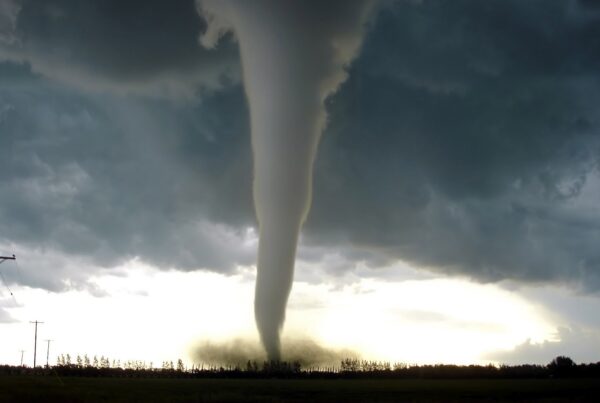By Gary J. Caruso, P.E. R.S. of Criterium-Caruso Engineers
Stormwater management is getting more and more sophisticated. Those holes in the ground that fill with water during rains are critical components of the stormwater management system. Maintenance is needed to ensure that the facility will operate as originally designed. In most cases this means that the facility is constructed in conformance with the original site plan and hydrology study. Specifically this includes detention/retention pond volume, elevations of earthen dams or the tops of wall, and size/elevation of weir openings. As you are probably beginning to realize, this can be a daunting task at older facilities and properties where information about the original design is not readily available.
Most properties, subdivisions and developments built in the last 20 years have provisions for the retention or detention of stormwater on their property. In short, detention basins and structures hold water temporarily and then drain at a controlled rate to a normally dry condition. Retention structures (wet ponds) are designed to retain water and allow excess water to be discharged at a controlled rate. Retention basins provide both permanent and temporary storage of stormwater runoff. The current emphasis in stormwater management is not only on the quantity of stormwater but also on stormwater quality.
The stormwater structures may be ground depressions to contain water, lakes, underground vaults and/or underground pipes. The facilities generally are designed to retain or detain water so that the flow from the developed facility nearly matches the estimated runoff flow that the property would have had in its undeveloped state. The overall stormwater system includes outlet and inlet structures, pipes, water quality filters, dams, spillways and swales. In most cases, these facilities on private property are the responsibility of the owner. For common interest realty groups, that means the homeowners.
Depending on the facilities, maintenance responsibility can range from simple periodic vegetation removal to extensive sediment dredging of lakes. The responsibility for stormwater maintenance is usually covered in the plats, deeds, easement, covenants, or by city/county regulation. Maintenance generally involves removing obstacles such as vegetation and sediment buildup that would hinder the controlled release of water or affect the storage capacity of the facility. Regular cleaning and maintenance of any water quality or BMP (best management practices) structures would also be needed. Additional information can be obtained from your local municipality.
Piping, drain inlets, area drains, culverts and manholes should be inspected periodically to ensure that they are operating properly and drain freely. Debris and sediment should be cleaned out of drainage structures to prevent blockage and flooding. Drainage swales should be maintained free of debris, weeds, and blockages. Any erosion should be addressed immediately by providing ground cover vegetation or stone (riprap) cover.
Some considerations for retention ponds are the following.
- Depth of permanent pool
- Surface area of the retention area
- Sufficient drainage area and dry weather base flow to maintain volume and quality of the pond. This is particularly important at lakes or other ponds that have a recreational or aesthetic function.
- Safety ledges when the permanent pool is deeper than 3 feet.
- Regular maintenance is needed to prevent clogging, debris, vegetation growth and sediment accumulation.
- Outlet structures, weirs, trash racks and orifices should be accessible for cleaning, maintenance and inspection.
In detention basins, similar maintenance as noted for retention ponds is required. Since the detention basin is meant to drain to a dry state after temporary stormwater storage, it is important that the basin is designed for complete evacuation of runoff. A poor bottom slope will result in low areas and ponding water. Lack of a low flow channel or erosion of the low flow channel will prevent the basin from emptying. Ponds, low lying areas and standing water will promote mosquito growth and potential accumulation of pollutants.
Retention ponds and detention ponds pose safety concerns. They are attractive nuisances, sometimes have steep slopes, high water levels and depths are present at times and outlet structures may have unprotected openings. The basin/pond areas if not used recreationally should be fenced and secured. All outlet openings should have safety grates.
By their very nature, retention ponds have embankments which may be considered dams and should comply with dam safety standards. Dam maintenance typically consists of two types of inspections, a periodic engineering inspection and an operational inspection. The engineering inspection is typically a thorough evaluation of the structural and hydraulic condition of the dam. These inspections should be conducted by a licensed professional engineer experienced in dam construction and design. Engineering inspections are required every 3, 4, or 5 years, depending upon the hazard potential of the dam.
Regular operational inspections are typically conducted by the owner or the operator of a dam. These inspections should involve visual inspection of the dam. Earthen dams are susceptible to deterioration by weathering and the erosive forces of wind, water, ice, and temperature change. Owner inspection of earth embankments should include observation for seepage, cracks, settlement, slumps, erosion, scour, vegetative growth, and animal burrows.
Municipalities are recognizing the need to increase the scope of stormwater services. Regulations are being developed to maintain the existing public infrastructure and to meet new regulatory requirements for environmental protection and stream habitat improvement. Educating yourselves on these regulations will prevent surprises in the future.


